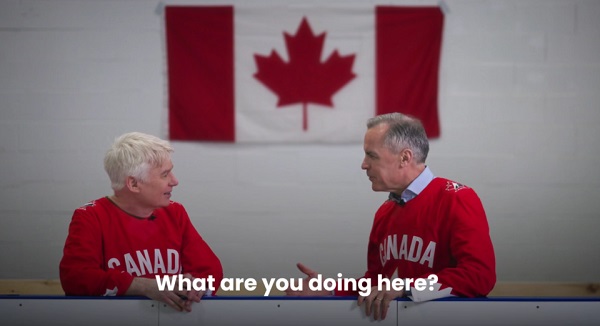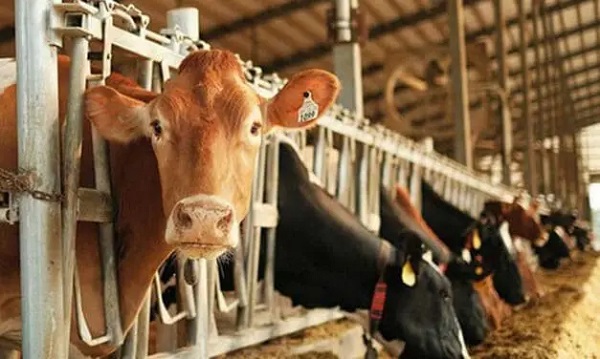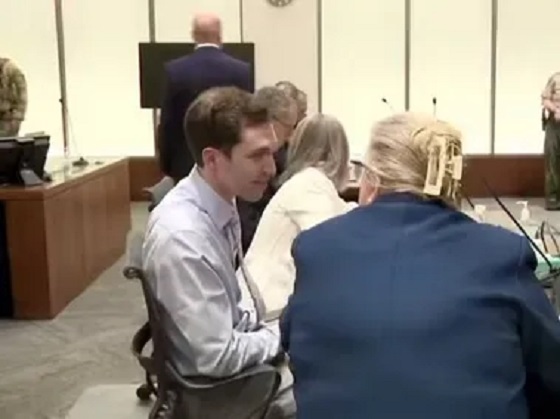Uncategorized
Save Taylor Swift. Stop deep-fake porn: Peter Menzies

Photo by Michael Hicks, via Flickr
From the MacDonald Laurier Institute
By Peter Menzies
Tweak an existing law to ensure AI-generated porn that uses the images of real people is made illegal.
Hey there, Swifties.
Stop worrying about whether your girl can make it back from a tour performance in Tokyo in time to cheer on her boyfriend in Super Bowl LVIII.
Please shift your infatuation away from your treasured superstar’s romantic attachment to Kansas City Chiefs’ dreamy Travis Kelce and his pending battle with the San Francisco 49ers. We all know Taylor Swift’ll be in Vegas for kickoff on Feb. 11. She’ll get there. Billionaires always find a way. And, hey, what modern woman wouldn’t take a 27-hour round trip flight to hang out with a guy ranked #1 on People’s sexiest men in sports list?
But right now, Swifties, Canada needs you to concentrate on something more important than celebrity canoodling. Your attention needs to be on what the nation’s self-styled feminist government should be doing to protect Swift (and all women) from being “deep-faked” into online porn stars.
Because that’s exactly what happened to the multiple Grammy Award-winner last week when someone used artificial intelligence to post deep-fakes (manipulated images of bodies and faces) of her that spread like a coronavirus across the internet. Swift’s face was digitally grafted onto the body of someone engaged in sexual acts/poses in a way that was convincing enough to fool some into believing that it was Swift herself. Before they were contained, the deep-fakes were viewed by millions. The BBC reported that one single “photo” had accumulated 47 million views.
For context, a 2019 study by Deeptrace Labs identified almost 15,000 deep-fakes on streaming and porn sites — twice as many as the previous year — and concluded that 96 per cent were recreations of celebrity women. Fair to assume the fakes have continued to multiply like bunnies in spring time.
In response to the Swift images, the platform formerly known as Twitter — X — temporarily blocked searches for “Taylor Swift” as it battled to eliminate the offending depictions which still found ways to show up elsewhere.
X said it was “actively removing” the deep-fakes while taking “appropriate actions” against those spreading them.
Meta said it has “strict policies that prohibit this kind of behavior” adding that it also takes “several steps to combat the spread of AI deepfakes.”
Google Deepmind launched an initiative last summer to improve detection of AI-generated images but critics say it, too, struggles to keep up.
While the creation of images to humiliate women goes back to the puerile pre-internet writing of “for a good time call” phone numbers on the walls of men’s washrooms, the use of technology to abuse women shows how difficult it is for governments to keep pace with change. The Americans are now pondering bipartisan legislation to stop this, the Brits are boasting that such outrageousness is already covered by their Online Safety Act and Canada so far …. appears to be doing nothing.
Maybe that’s because it thinks that Section 162 of the Criminal Code, which bans the distribution or transmission of intimate images without permission of the person or people involved, has it covered.
To wit, “Everyone who knowingly publishes, distributes, transmits, sells, makes available or advertises an intimate image of a person knowing that the person depicted in the image did not give their consent to that conduct, or being reckless as to whether or not that person gave their consent to that conduct, is guilty of an indictable offence and liable to imprisonment for a term of not more than five years.”
Maybe Crown prosecutors are confident they can talk judges into interpreting that legislation in a fashion that brings deep-fakes into scope. It’s not like eminent justices haven’t previously pondered legislation — or the Charter for that matter— and then “read in” words that they think should be there.
Police in Winnipeg recently launched an investigation in December when AI-generated fake photos were spread. And a Quebec man was convicted recently when he used AI to create child porn — a first.
But anytime technology overrides the law, there’s a risk that the former turns the latter into an ass.
Which means there’s a real easy win here for the Justin Trudeau government which, when it comes to issues involving the internet, has so far behaved like a band of bumbling hillbillies.
The Online Streaming Act, in two versions, was far more contentious than necessary because those crafting it clearly had difficulty grasping the simple fact that the internet is neither broadcasting nor a cable network. And the Online News Act, which betrayed a complete misunderstanding of how the internet, global web giants and digital advertising work, remains in the running for Worst Legislation Ever, having cost the industry it was supposed to assist at least $100 million and helped it double down on its reputation for grubbiness.
Anticipated now in the spring after being first promised in 2019, the Online Harms Act has been rattling around the Department of Heritage consultations since 2019. Successive heritage ministers have failed to craft anything that’ll pass muster with the Charter of Rights and Freedoms so the whole bundle is now with Justice Minister Arif Virani, who replaced David Lametti last summer.
The last thing Canada needs right now is for the PMO to jump on the rescue Taylor Swift bandwagon and use deep-fakes as one more excuse to create, as it originally envisioned, a Digital Safety czar with invasive ready, fire, aim powers to order take downs of anything they find harmful or hurtful. Given its recent legal defeats linked to what appears to be a chronic inability to understand the Constitution, that could only end in yet another humiliation.
So, here’s the easy win. Amend Section 162 of the Criminal Code so that the use of deep-fakes to turn women into online porn stars against their will is clearly in scope. It’ll take just a few words. It’ll involve updating existing legislation that isn’t the slightest bit contentious. Every party will support it. It’ll make you look good. Swifties will love you.
And, best of all, it’ll actually be the right thing to do.
Peter Menzies is a senior fellow with the Macdonald-Laurier Institute, past vice-chair of the CRTC and a former newspaper publisher.
Uncategorized
Cost of bureaucracy balloons 80 per cent in 10 years: Public Accounts

The cost of the bureaucracy increased by $6 billion last year, according to newly released numbers in Public Accounts disclosures. The Canadian Taxpayers Federation is calling on Prime Minister Mark Carney to immediately shrink the bureaucracy.
“The Public Accounts show the cost of the federal bureaucracy is out of control,” said Franco Terrazzano, CTF Federal Director. “Tinkering around the edges won’t cut it, Carney needs to take urgent action to shrink the bloated federal bureaucracy.”
The federal bureaucracy cost taxpayers $71.4 billion in 2024-25, according to the Public Accounts. The cost of the federal bureaucracy increased by $6 billion, or more than nine per cent, over the last year.
The federal bureaucracy cost taxpayers $39.6 billion in 2015-16, according to the Public Accounts. That means the cost of the federal bureaucracy increased 80 per cent over the last 10 years. The government added 99,000 extra bureaucrats between 2015-16 and 2024-25.
Half of Canadians say federal services have gotten worse since 2016, despite the massive increase in the federal bureaucracy, according to a Leger poll.
Not only has the size of the bureaucracy increased, the cost of consultants, contractors and outsourcing has increased as well. The government spent $23.1 billion on “professional and special services” last year, according to the Public Accounts. That’s an 11 per cent increase over the previous year. The government’s spending on professional and special services more than doubled since 2015-16.
“Taxpayers should not be paying way more for in-house government bureaucrats and way more for outside help,” Terrazzano said. “Mere promises to find minor savings in the federal bureaucracy won’t fix Canada’s finances.
“Taxpayers need Carney to take urgent action and significantly cut the number of bureaucrats now.”
Table: Cost of bureaucracy and professional and special services, Public Accounts
| Year | Bureaucracy | Professional and special services |
|
$71,369,677,000 |
$23,145,218,000 |
|
|
$65,326,643,000 |
$20,771,477,000 |
|
|
$56,467,851,000 |
$18,591,373,000 |
|
|
$60,676,243,000 |
$17,511,078,000 |
|
|
$52,984,272,000 |
$14,720,455,000 |
|
|
$46,349,166,000 |
$13,334,341,000 |
|
|
$46,131,628,000 |
$12,940,395,000 |
|
|
$45,262,821,000 |
$12,950,619,000 |
|
|
$38,909,594,000 |
$11,910,257,000 |
|
|
$39,616,656,000 |
$11,082,974,000 |
Uncategorized
Trump Admin Establishing Council To Make Buildings Beautiful Again


From the Daily Caller News Foundation
By Jason Hopkins
The Trump administration is creating a first-of-its-kind task force aimed at ushering in a new “Golden Age” of beautiful infrastructure across the U.S.
The Department of Transportation (DOT) will announce the establishment of the Beautifying Transportation Infrastructure Council (BTIC) on Thursday, the Daily Caller News Foundation exclusively learned. The BTIC seeks to advise Transportation Secretary Sean Duffy on design and policy ideas for key infrastructure projects, including highways, bridges and transit hubs.
“What happened to our country’s proud tradition of building great, big, beautiful things?” Duffy said in a statement shared with the DCNF. “It’s time the design for America’s latest infrastructure projects reflects our nation’s strength, pride, and promise.”
“We’re engaging the best and brightest minds in architectural design and engineering to make beautiful structures that move you and bring about a new Golden Age of Transportation,” Duffy continued.
Mini scoop – here is the DOT’s rollout of its Beautifying Transportation Infrastructure Council, which will be tasked with making our buildings beautiful again. pic.twitter.com/
9iV2xSxdJM — Jason Hopkins (@jasonhopkinsdc) October 23, 2025
The DOT is encouraging nominations of the country’s best architects, urban planners, artists and others to serve on the council, according to the department. While ensuring that efficiency and safety remain a top priority, the BTIC will provide guidance on projects that “enhance” public areas and develop aesthetic performance metrics.
The new council aligns with an executive order signed by President Donald Trump in August 2025 regarding infrastructure. The “Making Federal Architecture Beautiful Again” order calls for federal public buildings in the country to “respect regional architectural heritage” and aims to prevent federal construction projects from using modernist and brutalist architecture styles, instead returning to a classical style.
“The Founders, in line with great societies before them, attached great importance to Federal civic architecture,” Trump’s order stated. “They wanted America’s public buildings to inspire the American people and encourage civic virtue.”
“President George Washington and Secretary of State Thomas Jefferson consciously modeled the most important buildings in Washington, D.C., on the classical architecture of ancient Athens and Rome,” the order continued. “Because of their proven ability to meet these requirements, classical and traditional architecture are preferred modes of architectural design.”
The DOT invested millions in major infrastructure projects since Trump’s return to the White House. Duffy announced in August a $43 million transformation initiative of the New York Penn Station in New York City and in September unveiledmajor progress in the rehabilitation and modernization of Washington Union Station in Washington, D.C.
The BTIC will comprise up to 11 members who will serve two-year terms, with the chance to be reappointed, according to the DOT. The task force will meet biannually. The deadline for nominations will end Nov. 21.
-

 Crime19 hours ago
Crime19 hours agoBrown University shooter dead of apparent self-inflicted gunshot wound
-

 Business1 day ago
Business1 day agoCanada Hits the Brakes on Population
-

 Crime2 days ago
Crime2 days agoBondi Beach Survivor Says Cops Prevented Her From Fighting Back Against Terrorists
-

 International2 days ago
International2 days agoHouse Rejects Bipartisan Attempt To Block Trump From Using Military Force Against Venezuela
-

 Automotive2 days ago
Automotive2 days agoFord’s EV Fiasco Fallout Hits Hard
-

 Frontier Centre for Public Policy1 day ago
Frontier Centre for Public Policy1 day agoCanada Lets Child-Porn Offenders Off Easy While Targeting Bible Believers
-

 Agriculture1 day ago
Agriculture1 day agoWhy is Canada paying for dairy ‘losses’ during a boom?
-

 International2 days ago
International2 days agoTOTAL AND COMPLETE BLOCKADE: Trump cuts off Venezuela’s oil lifeline










